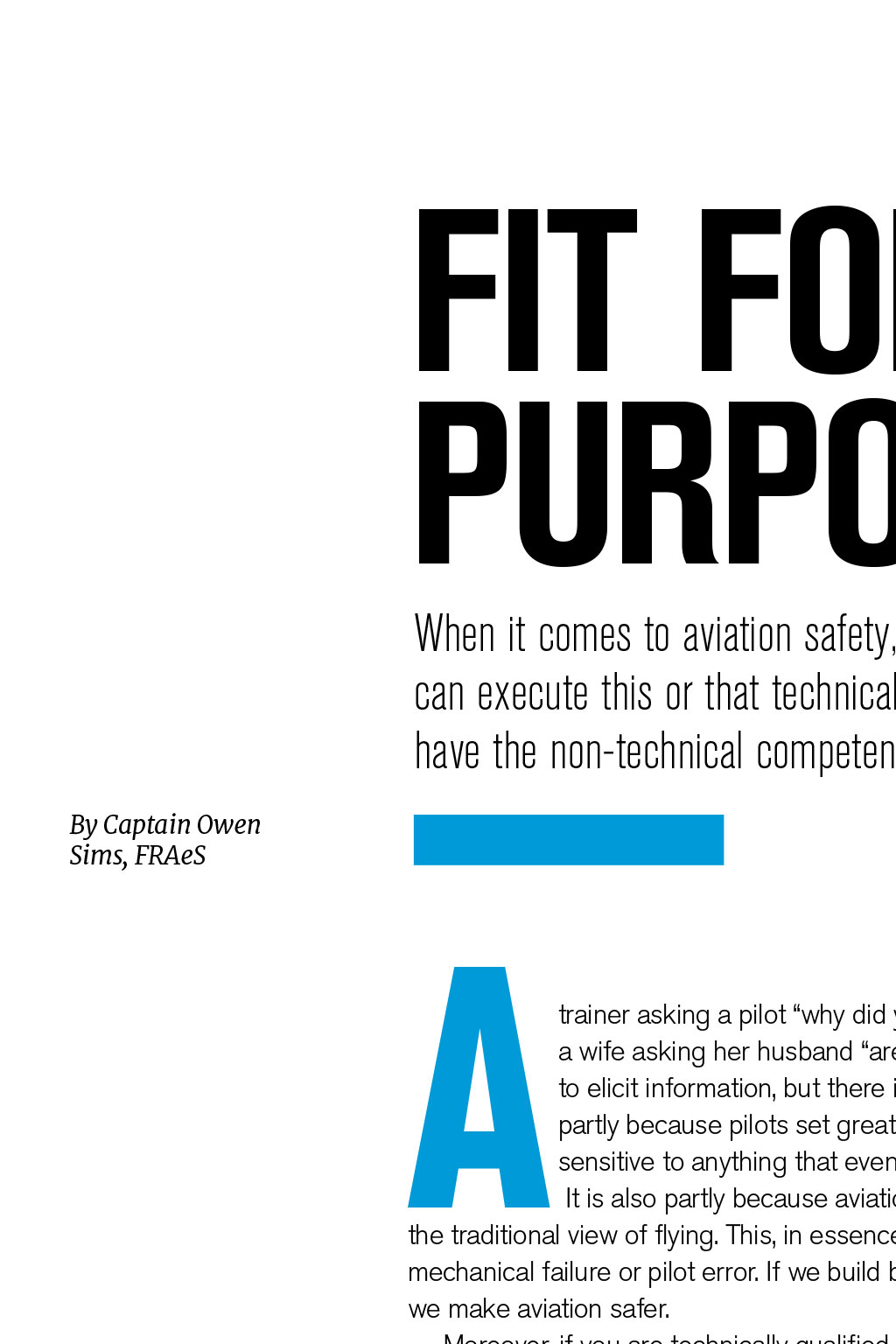

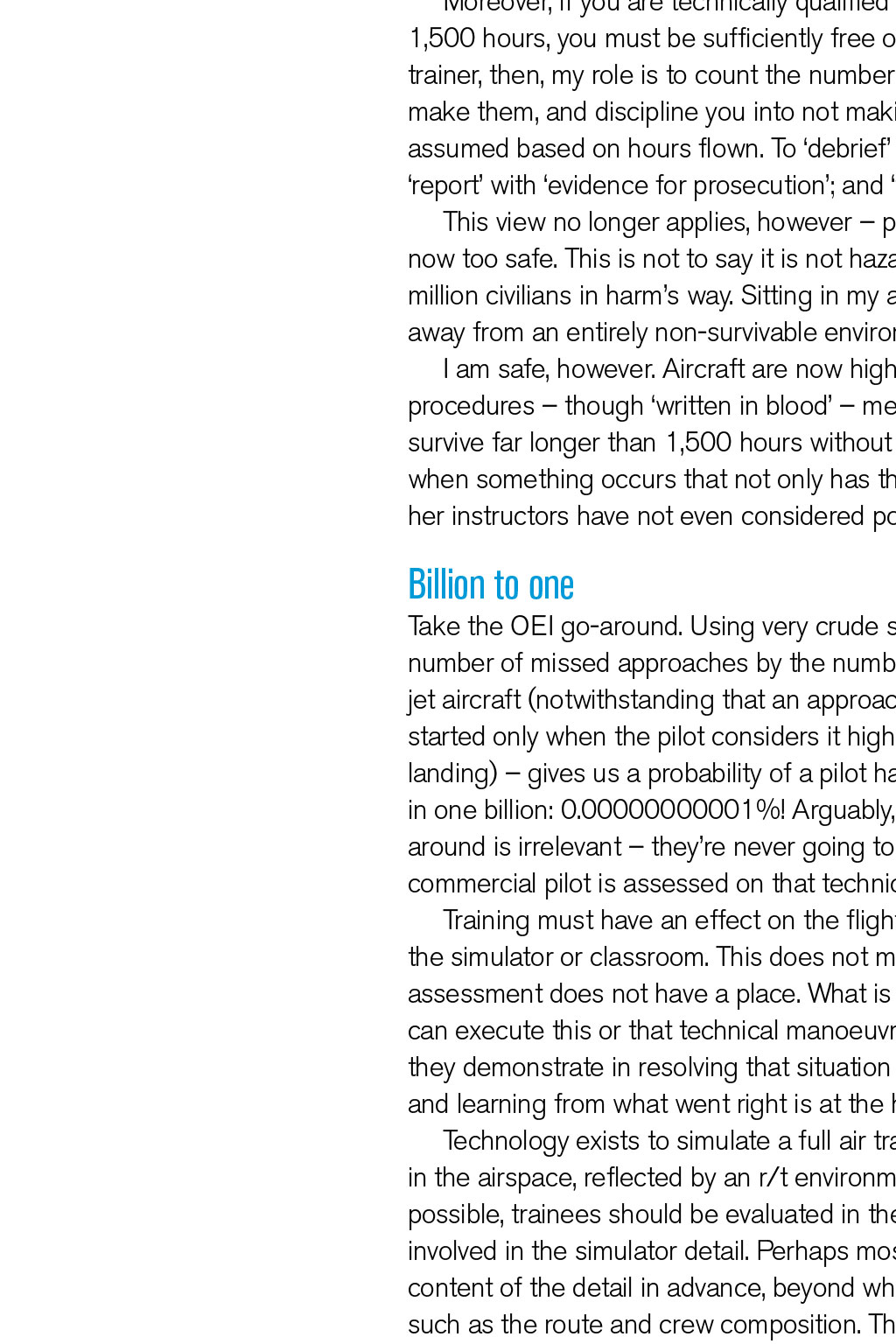
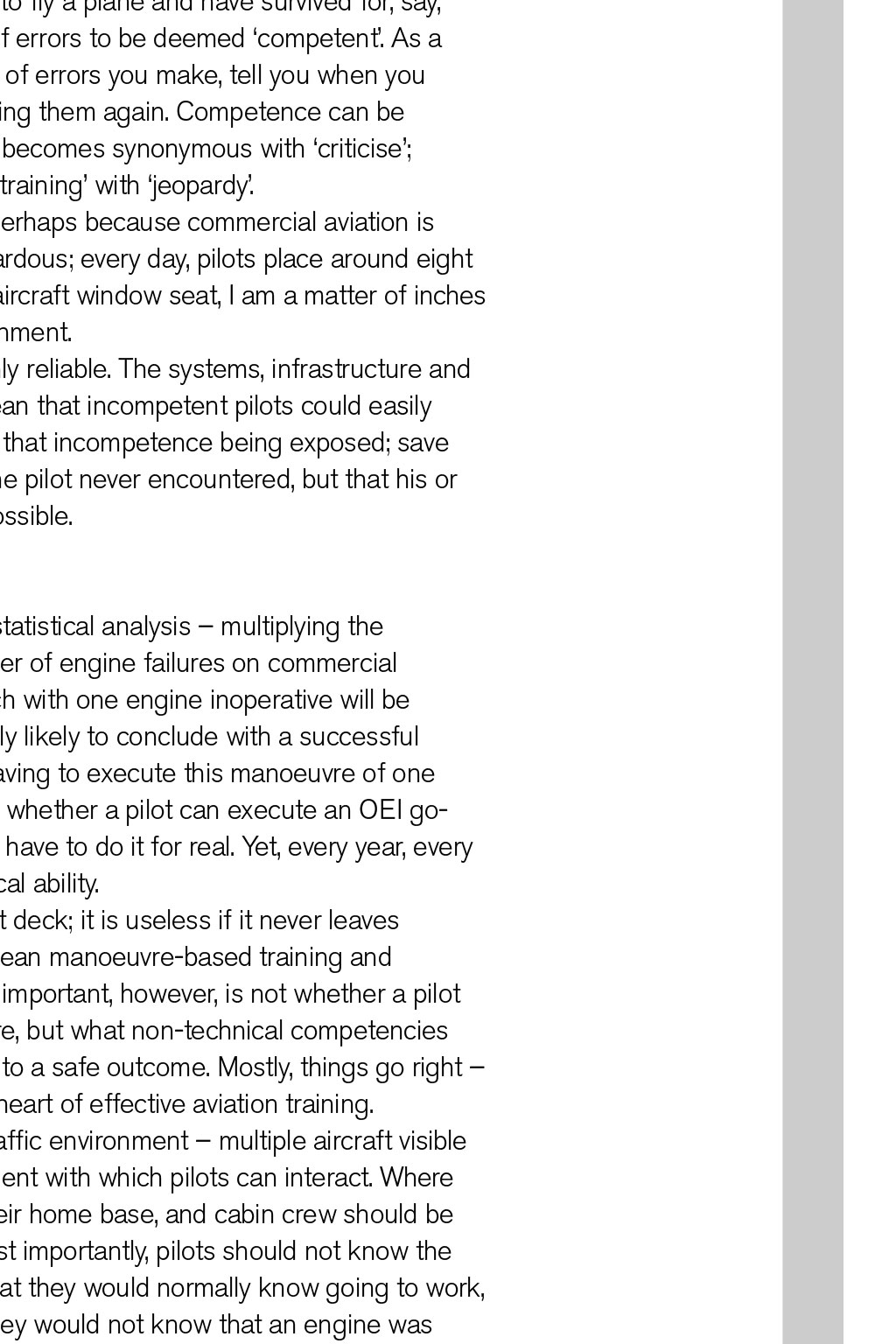
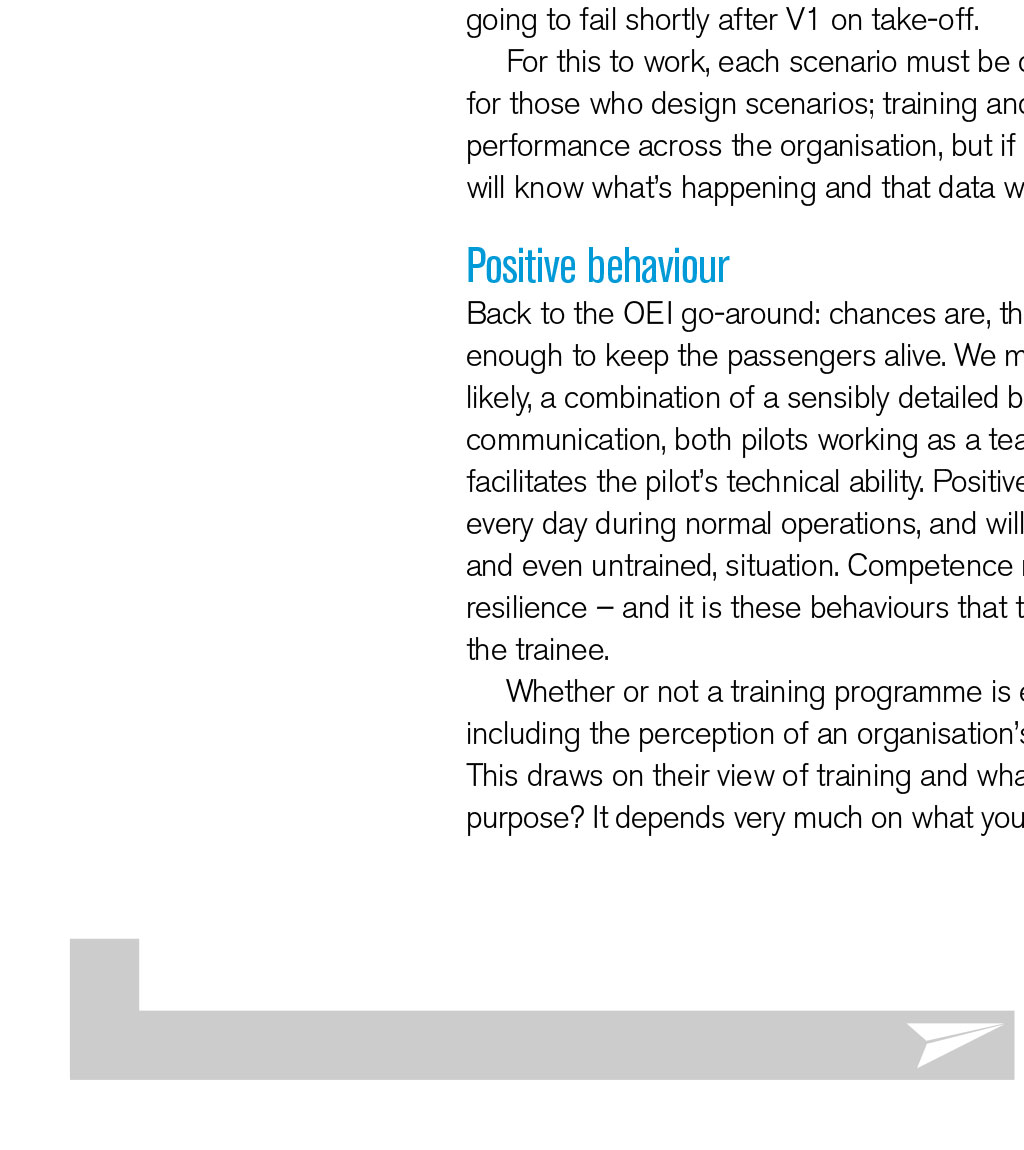
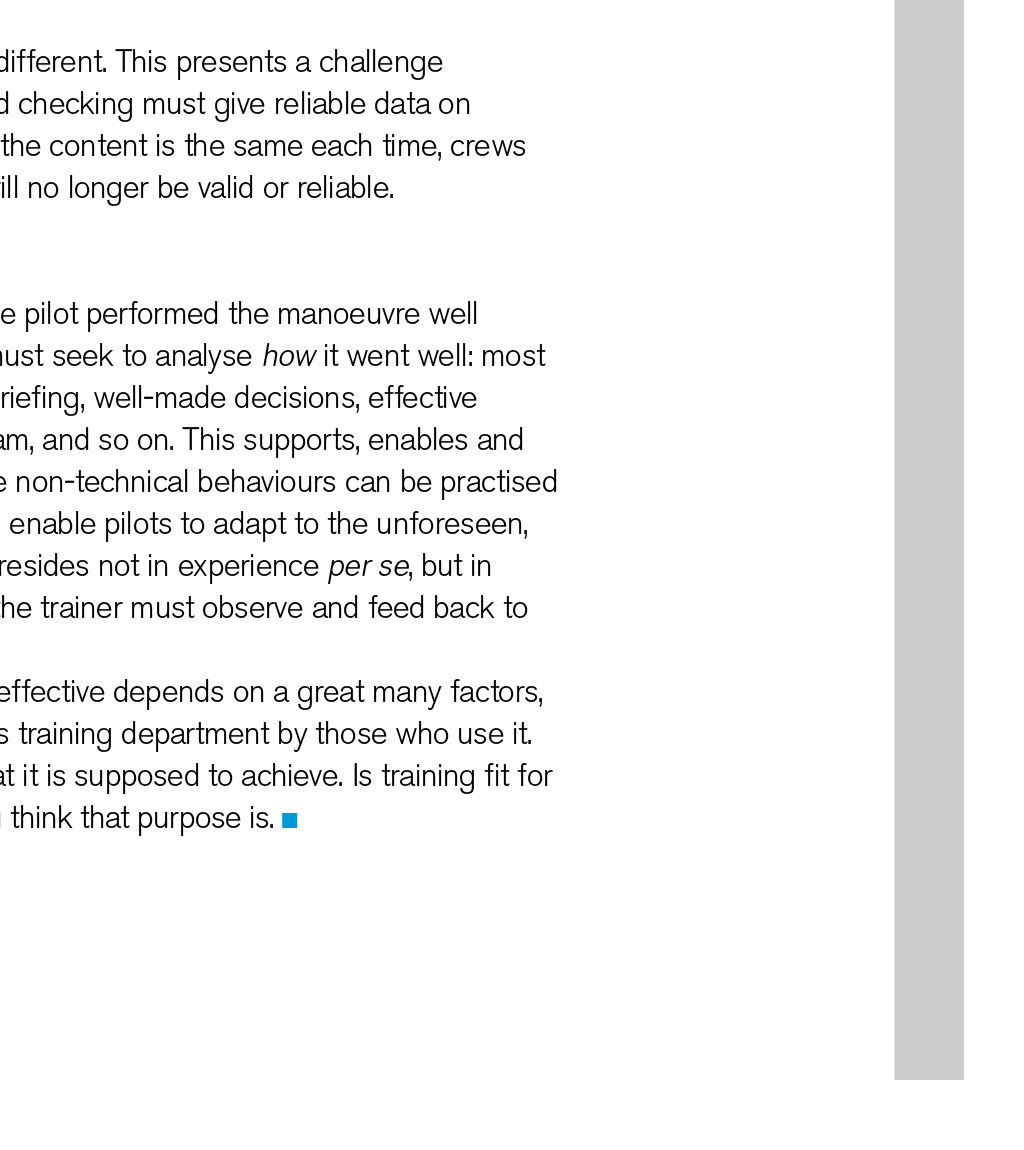

When it comes to aviation safety, it is not important whether a pilot can execute this or that technical manoeuvre, but whether they have the non-technical competencies to resolve a situation safely By Captain Owen Sims, FRAeS A trainer asking a pilot why did you not follow the procedure? is a bit like a wife asking her husband are you having an affair? The question aims to elicit information, but there is a strong implication of accusation. This is partly because pilots set great store by their skills and abilities, and so are sensitive to anything that even takes the appearance of criticism. It is also partly because aviation training still carries the legacy of the traditional view of flying. This, in essence, is that aircraft crash for two reasons: mechanical failure or pilot error. If we build better planes and stop pilots making errors, we make aviation safer. Moreover, if you are technically qualified to fly a plane and have survived for, say, 1,500 hours, you must be sufficiently free of errors to be deemed competent. As a trainer, then, my role is to count the number of errors you make, tell you when you make them, and discipline you into not making them again. Competence can be assumed based on hours flown. To debrief becomes synonymous with criticise; report with evidence for prosecution; and training with jeopardy. This view no longer applies, however perhaps because commercial aviation is now too safe. This is not to say it is not hazardous; every day, pilots place around eight million civilians in harms way. Sitting in my aircraft window seat, I am a matter of inches away from an entirely non-survivable environment. I am safe, however. Aircraft are now highly reliable. The systems, infrastructure and procedures though written in blood mean that incompetent pilots could easily survive far longer than 1,500 hours without that incompetence being exposed; save when something occurs that not only has the pilot never encountered, but that his or her instructors have not even considered possible. Billion to one Take the OEI go-around. Using very crude statistical analysis multiplying the number of missed approaches by the number of engine failures on commercial jet aircraft (notwithstanding that an approach with one engine inoperative will be started only when the pilot considers it highly likely to conclude with a successful landing) gives us a probability of a pilot having to execute this manoeuvre of one in one billion: 0.00000000001%! Arguably, whether a pilot can execute an OEI goaround is irrelevant theyre never going to have to do it for real. Yet, every year, every commercial pilot is assessed on that technical ability. Training must have an effect on the flight deck; it is useless if it never leaves the simulator or classroom. This does not mean manoeuvre-based training and assessment does not have a place. What is important, however, is not whether a pilot can execute this or that technical manoeuvre, but what non-technical competencies they demonstrate in resolving that situation to a safe outcome. Mostly, things go right and learning from what went right is at the heart of effective aviation training. Technology exists to simulate a full air traffic environment multiple aircraft visible in the airspace, reflected by an r/t environment with which pilots can interact. Where possible, trainees should be evaluated in their home base, and cabin crew should be involved in the simulator detail. Perhaps most importantly, pilots should not know the content of the detail in advance, beyond what they would normally know going to work, such as the route and crew composition. They would not know that an engine was going to fail shortly after V1 on take-off. For this to work, each scenario must be different. This presents a challenge for those who design scenarios; training and checking must give reliable data on performance across the organisation, but if the content is the same each time, crews will know whats happening and that data will no longer be valid or reliable. Positive behaviour Back to the OEI go-around: chances are, the pilot performed the manoeuvre well enough to keep the passengers alive. We must seek to analyse how it went well: most likely, a combination of a sensibly detailed briefing, well-made decisions, effective communication, both pilots working as a team, and so on. This supports, enables and facilitates the pilots technical ability. Positive non-technical behaviours can be practised every day during normal operations, and will enable pilots to adapt to the unforeseen, and even untrained, situation. Competence resides not in experience per se, but in resilience and it is these behaviours that the trainer must observe and feed back to the trainee. Whether or not a training programme is effective depends on a great many factors, including the perception of an organisations training department by those who use it. This draws on their view of training and what it is supposed to achieve. Is training fit for purpose? It depends very much on what you think that purpose is. TR AINING FIT FOR PURPOSE?